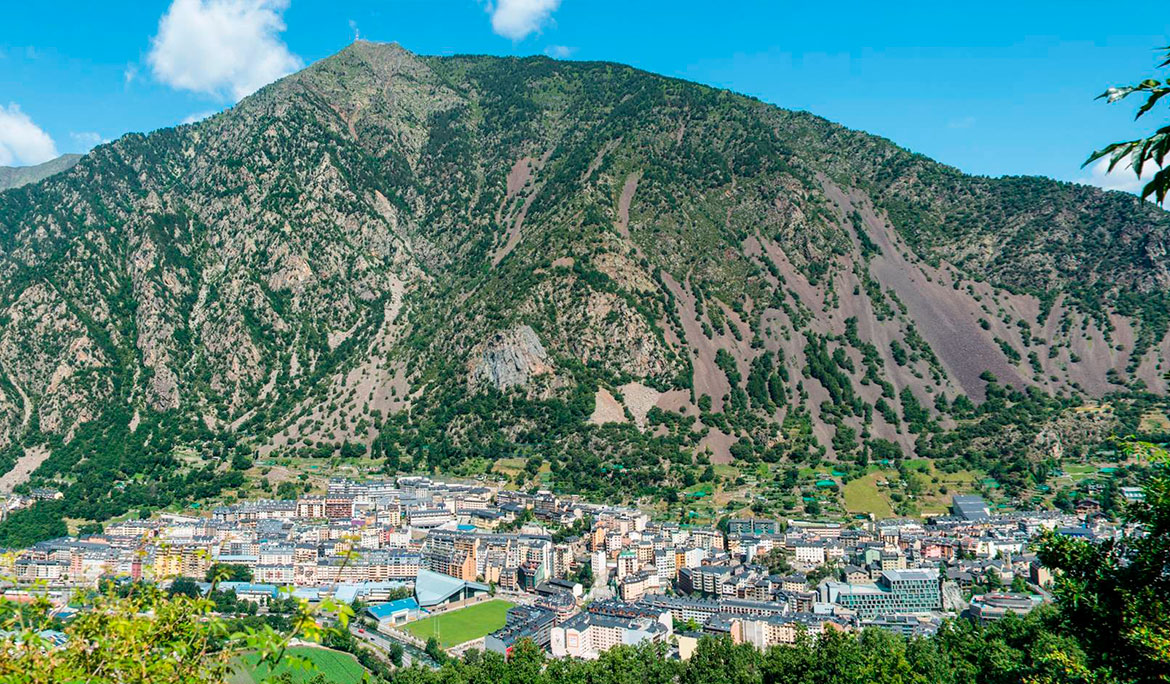In 2022, the global economy experienced several changes and challenges. It was a year marked by changes in government policy to deal with the consequences of rising inflation, increases in interest rates and rising prices. As elsewhere, Andorra’s economic outlook was varied and dynamic. This is reflected in the 2022 Economic Report presented by the Andorran Chamber of Commerce, which analyses last year’s growth situation and the prospects for the future.
Table of contents:
- The country’s growth reaches the level of 2019
The importance of foreign investment
The employment market
The fastest-growing industries
Economic prospects for 2023
Growth prospects for the future
The country’s growth reaches the level of 2019
Despite the economic and social challenges, Andorra was able to consolidate the growth that had begun the previous year throughout 2022. Real GDP grew by 8.8%, a rate five-tenths of a percentage point higher than in 2021. Although that figure has returned to the pre-pandemic level, GDP per capita has not yet reached that level, and closed the year at 34,304 euros (GDP per capita in 2019 was 34,490 euros). The Chamber of Commerce’s economic report highlights another important point in relation to the international sphere. It points out that in 2022 the Andorran economy was more dynamic than those of Spain, France and the Eurozone as a whole. The Principality was positioned as the second-fastest- growing European country, after Ireland.
The importance of foreign investment
In terms of foreign investment, 2022 was the second-best year. The volume of foreign investment represented 12% of GDP, less than the 19.3% of 2021, when there were more projects due to the pause in the pandemic in 2020.
Last year, 925 applications were formalised, with a value of 388.9 million euros, and the amount per investment represented 420,000 euros per project. In terms of origin, the investments came from Spain, Luxembourg and France. The sectors where most formalised operations are concentrated are services, followed by property development and construction.
The employment market
Another aspect analysed in the report is the employment situation in Andorra. The unemployment rate has fallen to 2.1% and the economically active population has increased by 34% to 49,775 people. 16.9% are self-employed and the rest are employed in the private and public sectors. The report also highlights the fact that, since the end of 2002, the situation of people who had temporarily stopped working or reduced their working hours as a result of the pandemic has returned to normal.
The fastest-growing industries
Progress was largely driven by construction and services. Construction contributed to the creation of new jobs. The slowest growth was in the primary sector and in industry.
• The services sector
Within the services sector, those related to tourism and trade, which were also the activities most affected by the pandemic, grew the most. This was due to the increase in tourism. At 8.4 million, the number of visitors was higher than before the pandemic. There were increases in the numbers of re-opened establishments and employees, as well as an increase in the volume of imports, part of which was due to higher prices.
• The financial sector
The financial sector also performed well. Andorran banks closed 2022 with a 16.3% increase in total profits, driven by the dynamic economy and rising interest rates. This increase was also reflected in a 3.6% rise in the volume of client funds under management. The improvement in net interest income, triggered by the rise in European Central Bank interest rates, contributed to an increase in the banking sector’s return on equity. In addition, the NPL ratio continued to decline and solvency and liquidity levels remained good, above the average for European banks.
In this article, we explain how the Andorran banking system works.
Economic prospects for 2023
Although we are already approaching the end of the year, there are still three months and challenges to face. In 2023, Andorra’s economy will slow down in its growth. On the one hand, due to the normalisation of economic development after the recovery of the pre-pandemic level of activity. On the other hand, due to the global outlook and, in particular, the European outlook, with the strong impacts of inflation and rising interest rates. These factors will continue to condition the development of the Andorran economy in the second half of 2023, limiting its capacity for growth.
In the first quarter of 2023, growth was positive but less intense than in the fourth quarter of 2022 (3.5% compared with 5.2%).
The GDP data for the first quarter of 2023 show a good performance by the Andorran economy, albeit with a more moderate increase than in previous quarters.
Growth prospects for the future
The Chamber of Commerce concludes its report with a relatively positive assessment, highlighting the challenges to be faced in the future. These include introducing policies to improve productivity and competitiveness in the areas of digitalisation, innovation and energy transition. In addition, sustainable economic growth and job-creation in the short and long term must be promoted.
In 2022, Andorra’s economy experienced several challenges and opportunities. Thanks to the recovery of key sectors such as services, it is back to the level of 2019. And although in 2023 it has started to slow down due to the global environment, it is still expected to end the year with good economic prospects.



